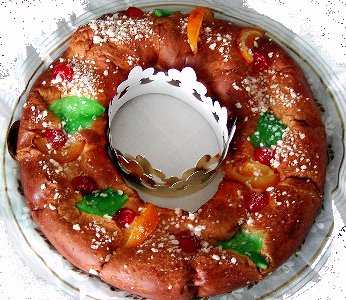Facts About Tortell
King cake is a cherished confection with deep roots in the celebrations of Epiphany and Mardi Gras (also known as Carnival) across various countries. This delightful cake boasts a history spanning approximately 300 years, originating as a simple French bread dough dusted with sugar and concealing a bean. Over time, it has evolved into a variety of delectable forms, including brioche topped with icing or puff pastry filled with an assortment of treats. A constant feature is the hidden fève, a small figurine tucked inside the cake. The fortunate individual who discovers it in their slice is bestowed with special privileges and responsibilities.
Different countries have their own unique versions of the king cake, each with distinct recipes and customs. In the United States, particularly in New Orleans, king cake is an integral part of Mardi Gras festivities. These cakes are available in a myriad of styles and flavors and often grace party tables. The person who finds the hidden trinket in their piece of cake is traditionally tasked with hosting the next party or providing the next king cake.
In Portugal, there's the "bolo-rei" a cake enjoyed from Christmas to Epiphany. It is laden with dried fruits and also includes a hidden fava bean. Meanwhile, in Spanish-speaking countries, the "roscón de reyes" is a popular treat for Epiphany, featuring various decorations and traditions. In the United Kingdom, there once was a similar custom involving a "Twelfth Cake" consumed on Twelfth Night, with hidden beans used to determine the evening's King and Queen.
King cakes are often adorned with colored sugar crystals representing justice, faith, and power, symbolizing the three kings who visited Jesus. Beyond their delicious ingredients and flavors, these cakes hold significant cultural and religious meaning, bringing people together during festive seasons.

 Andorra
Andorra